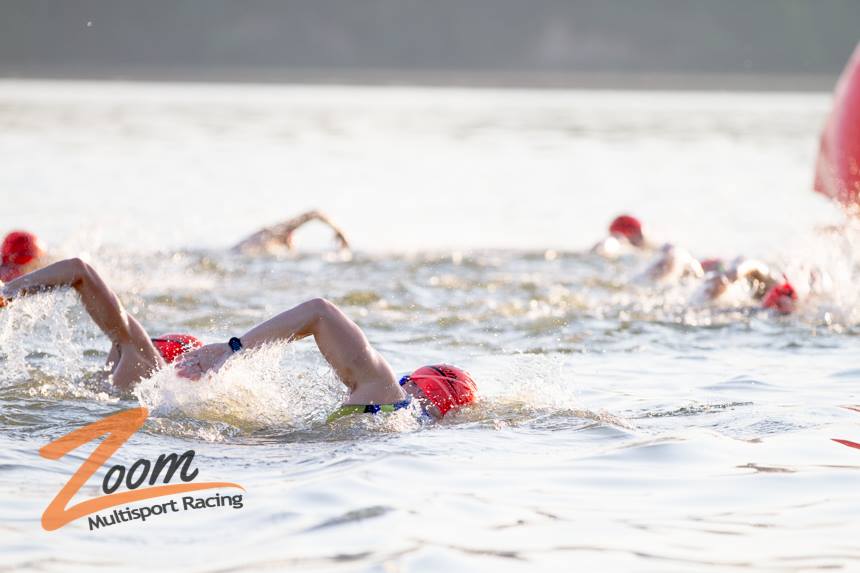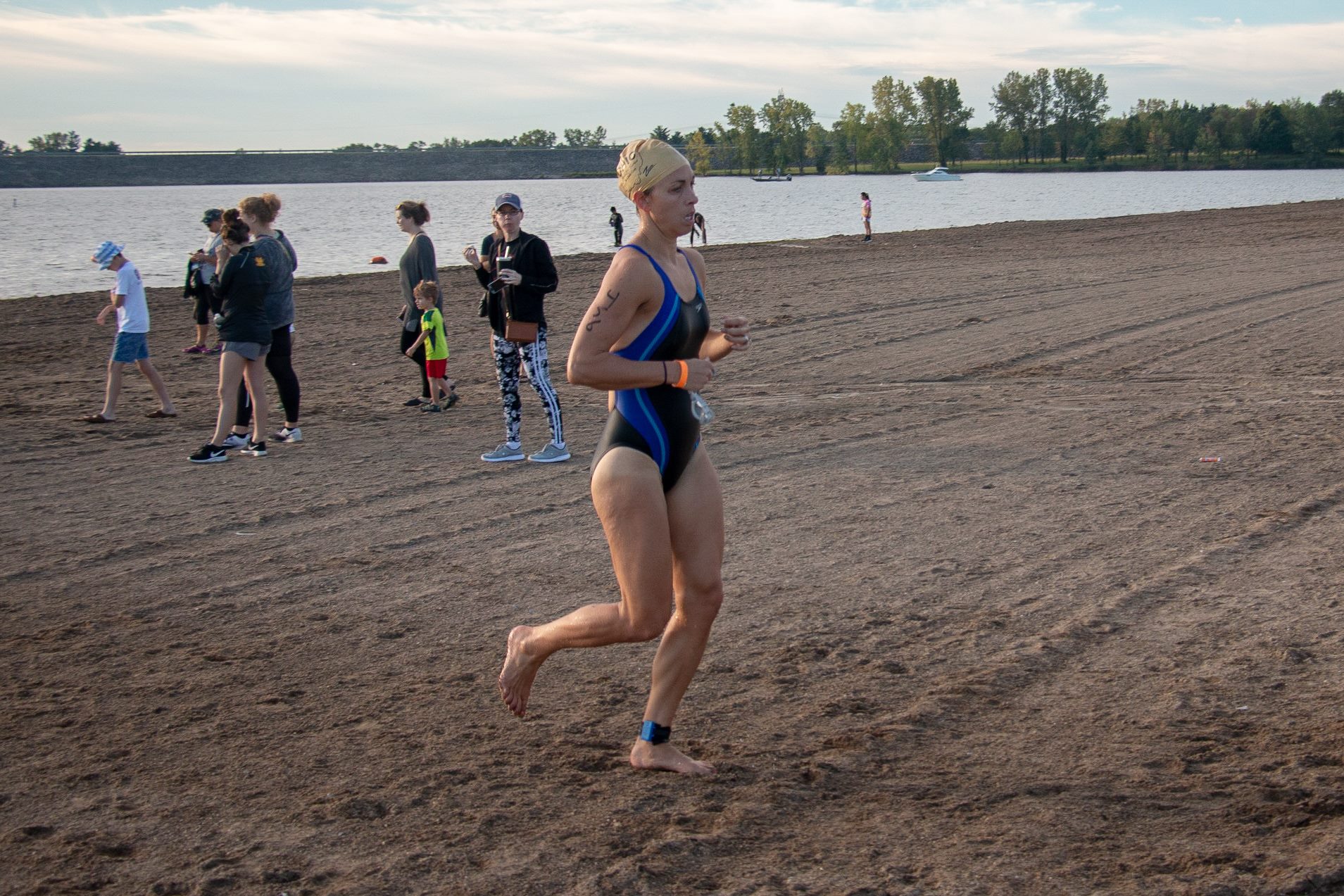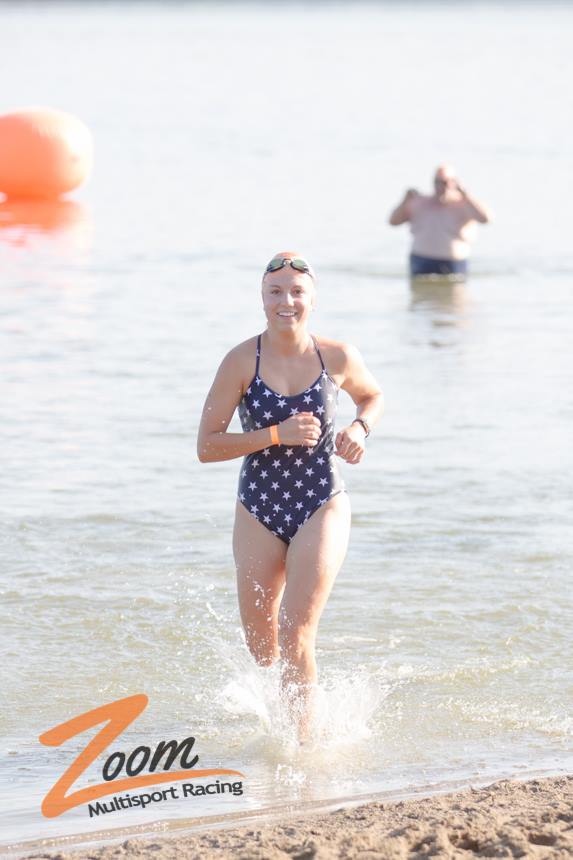2026 Season Registration is Open
The Dayton Tri hosts the USAT Ohio State Championships!
Get Training Tips for your Off-Season
Kids Races at the Dayton Tri, and 5k, 10k & 15k Runs added to all Race Dates
Open Water Swim Tips
Learn more about the research consulted and images used in this section.
| Swimming Resources | Good Form Swimming & Drills | Boost Your Bike | Rock Your Run | Transition |
| Nutrition | Strength | Our Races | Training Plans | Tri Training Tips | Coaching |
Surge your swim with our compiled resources and test your new skills at Zoom Triathlons, Aquabike & Open Swims this summer!
General Resources
- Master the Triathlon Swim
- Resources on Gear, Training & Wetsuits
- How to Have a Great First Triathlon Open Water Swim
Open Water Drafting for Faster Times
- Drafting in a Triathlon Swim & Other Tricks for Better Times
- Master Open Water Swim Drafting from Triathlete.com
- Faster Swim Times with Drafting in the Water
- Open Water Drafting with Helpful Video
Drafting Help
- Swimming right behind another swimmer can yield a 9.5 second improvement in 400m swim time. That is 20 seconds in a ½ mile swim and 40 seconds in a mile swim.
- Swimming 2 feet behind someone can reduce your drag in the water by 44% and if you are 19 feet back you still save 16% on your drag.
- Drafting resulted in a decrease of 7% in heart rate, lower perception of effort, and improved cycling efficiency after the swim
- To be in optimal position you want to be either just behind their feet or to have your hands wider and overlapping with their feet, just to the outside. Be aware that it is not cool to be touching or slapping their feet, so I recommend being just offer the back of their feet.
- If you think the swimmer is slowing down, get out of the draft and swim up next to them. You will feel the resistance go up suddenly and you will know if they have slowed.
- If you start to lose them because they are swimming to fast, let them go and get behind the next person who passes you.
- Ideally you would position yourself just off the shoulder of that swimmer, so your eyes are about even with their hips. You need to be close in side to side for this to work.
- This is actually a faster (less resistance) spot than behind, but it can be a bit hard to stay here, as the lead swimmer may just angle away.
- Its easiest when you choose the side of the swimmer so you can see them on your natural breathing side (For example, if you breathe on the right, stay on the left side.)
- What is Drafting: Drafting entails gaining a tow in the slipstream of a swimmer close in front of you.
- Behind drafting: This is swimming directly behind a swimmer. Look to see their feet, and use their bubble trail to follow them. Feel for their kick with your hands. Here you will feel as if you were to swim directly behind a swimmer and close to his/her feet the result would be a "pulling" effect. You want someone from your swim wave (you can check their cap color) who preferably is making a lot of bubbles so you can keep track of them easily.
- Side Drafting: This is drafting is about halfway up on the lead swimmer on the side. The benefit being, an added push provided by the swells or wake created by that lead swimmer.
- Recommendation: The ideal person to draft behind is someone who is just slightly faster than you, does not kick much and swims straight—it can be challenging to find someone who fits the bill exactly, so swim your own race, and if a swimmer seems to be the right speed, take advantage of the draft for as long as you are able. Still, regardless of whose feet you're on, be sure you stay on course.
- Practice with Your Friends: It takes a little practice to learn how to swim on feet while not altering your swim stroke too much.
- Be Sure You Sight: Don't rely on the person you are drafting to navigate for you. There is no guarantee they are going in the right direction! So be sure you sight for yourself.
Wetsuits
Our Open Water Triathlon Swimming Tips & Tricks
Relax at the start
- Warm-up in the water
- Use positive speech
- Count to 10 repeatedly
- Remind yourself that is no different than a training swim
- Repeat the word relax and relax your body more and more each time
- Close your eyes and focus on relaxing images
- Listen to music
Relax in the water
- Practice losing your goggles
- Practice swim sprinting all out for a few seconds and then get back into your stroke and try to relax
- Practice flipping over in the water and then swimming to your destination
- Practice open water swimming before the event
- Breathe consistently
- Find your rhythm
- Focus on your stroke
- Count your strokes
- Stop and tread water
- Flip over and do the backstroke
- Rest of the bottom or the boat
- Get clear of people by swimming on the margins
- Go out slower and increase speed or go out faster and get clear of the people
- Do not rush into the water at the start
The Start
- Scope out the course and water conditions
- Get in a good warm-up
- Plan your route
- Pick your spot (front, side, back)
- Swim as soon as you can
Sighting
Sighting basically means looking where you are going. Sighting every 6 to 8 strokes should prevent you from deviating from the course.
- Lifting your head up at the front of the stroke and taking a breath at the same time
- Take a breath at the normal time in the stroke and then lifting your head without breathing as the hand enters the front of the stroke.
- As the arm extends forward in the water, press it down in order to help you lift your head up. Get your head clear of the water in order to see above the waves. As soon as you've looked forward, turn your head to the side to inhale, in one smooth movement.
- Pool Practice: Swim a lap, sighting every 6-8 strokes. Focus on something at the end poolside as you would look for the buoys in an open water swim.
- Check out the Race Course: Get into the water before the race and practice finding some visual guides. Practice swimming and sighting these guides. Your best options are large, distinctive and colorful.
- Swim Straight: It is about getting from A to B using the minimum amount of energy and it’s very easy to swim off course during an open water swim wasting time and energy.
- Follow your own line or path. Don’t fall into the trap of following others on the swim, they may be swimming off course!
- Swimming no further than you have to also means being able to swim in a straight line. Try swimming 10 strokes with your eyes closed before looking up to see where you are. If you always veer the same way, try to work out what’s causing the imbalance.
- Crooked swimming is usually an issue with your swim stroke: (a) One arm pulling stronger than the other (b) Crossing over the midline when you pull through
Stay to the Outside of the Buoy
- There can definitely be a lot of congestion around the buoys. If you are in a big pack it is better to go around a little on the outside of the buoy. Going right on the inside can be rough and you will have a good possibility of getting dunked. If it is a tight ninety-degree turn you may have to one arm swim around the buoy using the other arm to steer. The key is to not lose too much forward movement and to not lose your body position. Stopping or going into breaststroke is not good and doesn't help.
The Exit
- Swim in as far as you can because it is faster to swim in the water than run in the water
- When running either out of the water it is important to keep a high knee pulling your foot out of the water then moving your foot out to the side away from your body to get it out of the water. This technique is very fast while running in knee-deep water. There is a lot of side-to-side transfer of weight.
- Start to get your wetsuit off
Less Kick & Use More Arms:
- Powering your way around the swim using a vigorous leg kick is not advisable – these are muscles you need for the bike ride and run. Try to kick just twice during each stroke cycle; the aim of the kick is to stop the legs from sinking, rather than to propel you forwards.
- Practice this in the pool by using a pull buoy
Bi-Lateral Breathing
- The added advantage of being able to breathe on both sides is that if conditions, such as glaring sun, choppiness or other swimmers, require that you breathe only to the left or right, you are able to do so.
- If the swim course is an open rectangle whereby you swim out for a short distance then head left or right along the shoreline then back in again, you can use the shoreline as a means of marking your position.
- Also, breathing on both sides will keep your stroke in balance and allow you to swim straighter for more strokes.
- During your swim training, practice breathing every three strokes. This will force you to breathe on both sides. If you are uncomfortable at first, use fins or a pull buoy until you develop a feel for this.
- While in a race, you will probably be working at an intensity that requires you to breathe every second stroke (either always on the left or always on the right).
- Breathing 'bilaterally' (every third stroke – alternately to left and right) is an important factor in developing a symmetrical stroke.
- Some swimmers breathe by lifting their heads out of the water (to the side or front), causing their hips to drop. When hips drop, the surface area you must push through the water becomes larger, and swimming becomes harder. The key to fast, easy swimming is to roll from side to side. An effective body roll engages your larger core muscles rather than the smaller muscles in your arms and shoulders. It also means that a leisurely breath only requires turning your head a few degrees.
- Breathing to both sides irons out bad stroke mechanics. When Terry Laughlin, founder of Total Immersion Swimming, noticed that his swimmers at the U.S. Merchant Marine Academy swam lopsided freestyle, he told them to breathe to their "wrong" side. "Instantly, every stroke was more symmetrical," Laughlin explains. "Lacking a history of practicing bad habits, each swimmer's less-natural breathing side was actually more efficient." Practice breathing on your "wrong" side during warm-up, warm-down and slow sets. As you improve, incorporate three-stroke breathing (breathing on alternate sides).
Copyright 2026 Zoom Multisport Racing
BytePages Content Management System Powered by Byte Productions™
BytePages Content Management System Powered by Byte Productions™

